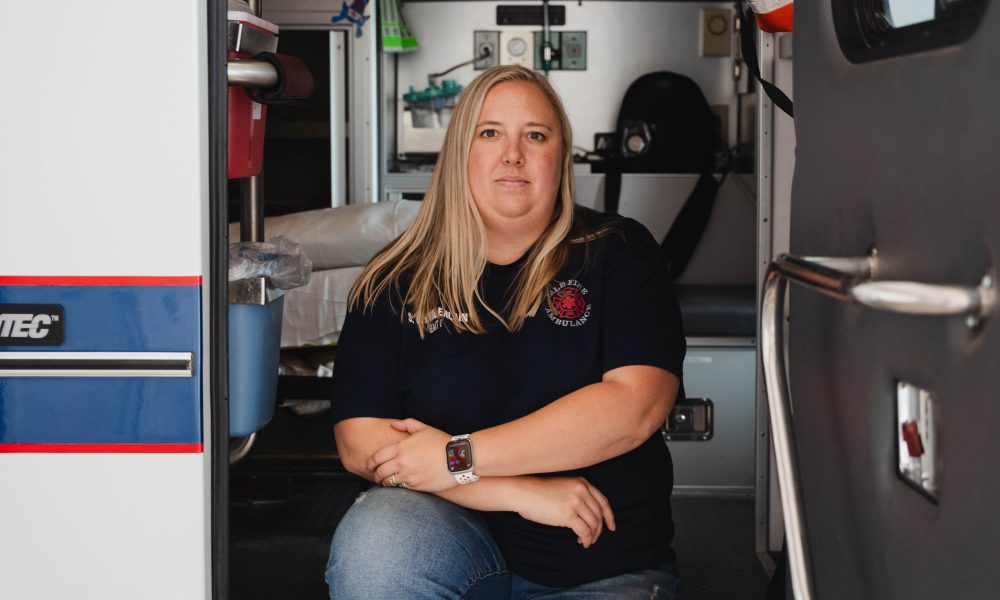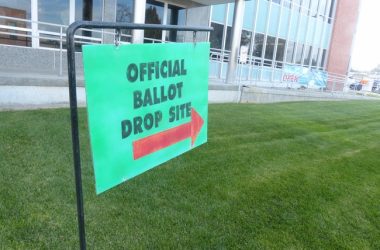About this series: Fentanyl is having a deadly impact on Malheur County, and one not well understood. The Enterprise reporting team of Mac Larsen, Isaac Wasserman and Cynthia Liu spent weeks learning about this threat. In this part, meet some of the people who deal daily with this risk to lives in our community. Share your comments and thoughts with an email to Editor Les Zaitz ([email protected]).
THE MEDIC:
Samantha Chamberlain, ambulance supervisor, Vale Fire and Ambulance
When dispatchers call on Vale Fire and Ambulance to respond to an individual who is unresponsive, unconscious or in cardiac arrest, responders make no assumptions.
“As a training officer, I really caution my EMTs about automatically assuming that it is drugs and that we need to make sure we’re looking at every possibility,” said Samantha Chamberlain, Vale’s ambulance supervisor. “I think with the amount that we’ve seen lately, that does tend to be the forefront of our thought process is that we need to be thinking about whether this could be drugs in any way.”
Chamberlain has seen fentanyl and opioid overdoses change the department’s response to calls that fit a certain description.
Generally, dispatchers will give first responders an approximate age and condition of the individual needing care. According to Chamberlain, if the age is under 20 and they’re unresponsive, EMTs begin to assume the worst: a possible deadly fentanyl opioid overdose.
“I think I’ve used Narcan more in the last, probably, three years than I have in the last 14 years of my career,” said Chamberlain.
Chamberlain started working at Vale in 2008 and became the supervisor two years ago. She trains Vale’s ambulance crews.
‘It’s hard to go into these situations, especially if you see somebody that you’ve had to bring back multiple times, and they keep doing the same thing.’
Samantha Chamberlain
As overdoses have become more common, that means adjusting to the needs of the community. The younger age of the individuals and the rise in overdoses in the community can take a toll.
“We have a good core group of people that have been working together, for some of us, five, ten years together. So, we’ve always been very good about checking in with each other,” said Chamberlain. “It’s hard to go into these situations, especially if you see somebody that you’ve had to bring back multiple times, and they keep doing the same thing.”
In a small town like Vale, knowing people and the landscape can make a big difference. Chamberlain said that EMT response can be faster when medics are familiar with the situations and what may be in store.
“When you first get dispatched to a call, before you really get on scene and see what’s happening, you kind of have every possibility go through your head,” said Chamberlain. “Then when you get on scene and you kind of see what’s happening and you’re able to kind of make almost a clinical diagnosis of okay, this is what we’re working with.”
As the first to address overdose situations, medics evaluate a medical emergency and as necessary administer Narcan, a life-saving antidote.
“I see so many lives taken away prematurely,” said Chamberlain. “I very much feel like we need to support these people who have these addictions and get them help. But it is hard to see people constantly make these decisions to harm themselves.”
–Mac Larsen, The Enterprise
RELATED COVERAGE:
PART 1: SNEAKY KILLER: Fentanyl in Malheur County
EXCELLENCE IN JOURNALISM – Available for $7.50 a month. Subscribe to the digital service of the Enterprise and get the very best in local journalism. We report with care, attention to accuracy, and an unwavering devotion to fairness. Get the kind of news you’ve been looking for – day in and day out from the Enterprise.




